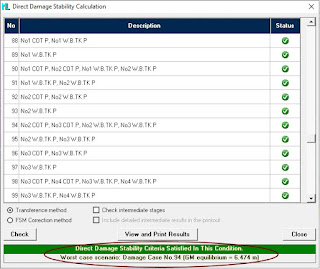Vessel Air Draft & Floating Position External Module

Immediate Benefits & Features of this software: With the “Vessel Floating Position” module in use, you can easily calculate and provide all info requested by the Charterers/Port agents/Terminals, without requiring retrieving the needed figures from loading manuals and vessels' Plans. The most critical information of your vessel's floating position (ie. During loading/unloading operations) are fully accessible by anyone. The risk of losing important ship documentation during handling of hard copies is minimized. Expenses and delays for retrieving appropriate vessels’ plans or manuals can be avoided. Automatic synchronization of data between vessels and office (fleet-based). Office fleet-based version.



